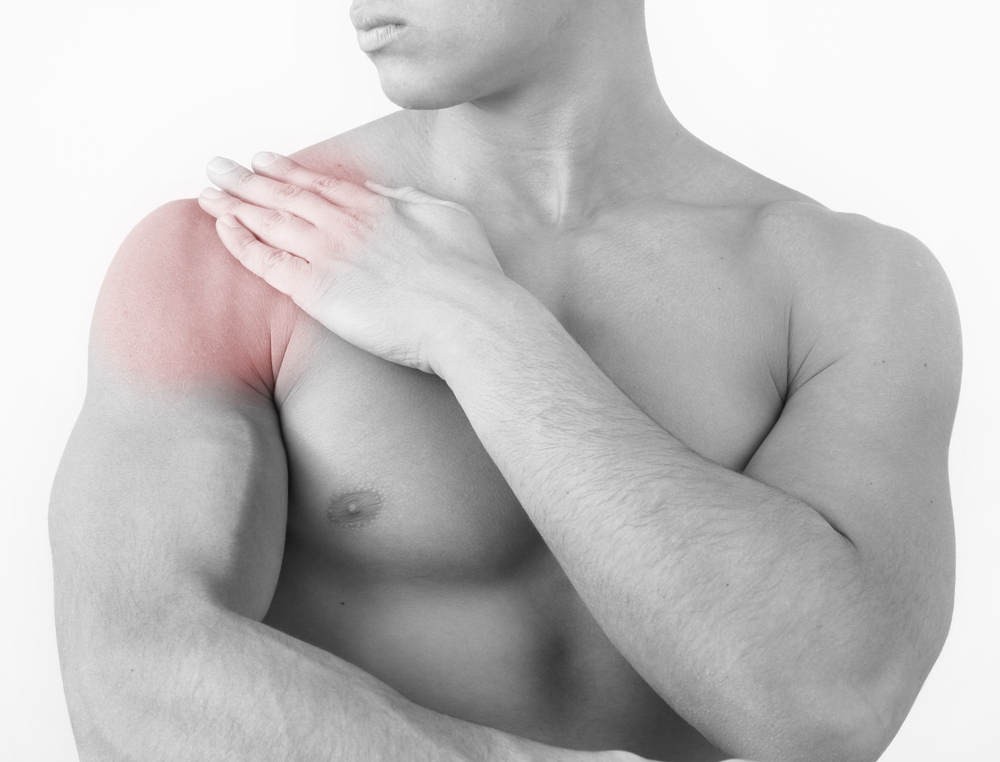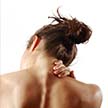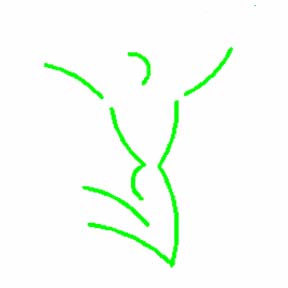
Get the COMPLETE
Pain Free & Fit TM
Shoulder Pain Healing
Exercise Program NOW!
$15.99
Add Text Here...
"Almost every case of shoulder pain I have ever treated was related to some sort of mechanical or posture dysfunction" says Dr. Michael C Remy, a sports chiropractic orthopedist with over 25 years of successful shoulder treatment experience. Whether the injury was in a highly trained athlete, or just an average Joe who was doing some yard work, Dr. Remy explains that the mechanical issues were usually there for some time, long before the stress of the injury ever caused pain.
It turns out that the shoulder relies heavily on balanced muscular forces for its stability and health, due to the shallow joint socket between the arm and shoulder blade. Almost everyone has some sort of shoulder blade or upper arm muscular imbalance due to repetitive motions, asymmetrical postures, or favorite sided activities such as swinging and throwing. These asymmetries build up over many years and cause the shoulder to be at risk of injury due to weakened soft tissues such as tendons, ligaments and muscles. Often, playing sports and gym strengthening exercises only strengthen the inherent dysfunction because the exercises are being performed without correct body mechanics. These mechanical asymmetries are often very subtle and go unnoticed by trainers and coaches. Shockingly, even some physical therapy and rehab supervised workout sessions can miss these crucially important mechanical errors. Sadly, many shoulder exercises are actually strengthening the mechanical errors that lead to more pain and injury. This occurs frequently in personal training, group exercise classes and even "advanced" instruction such as restorative yoga. Without expert mechanical analysis and correction of the shoulder and other body regions, any exercise, or treatment, including surgery, is often only a temporary pain fix.
Fot lasting relief, a conditioning program aimed at strengthening correct posture and shoulder mechanics, based on the individual's unique patterns of distortion, needs to be implemented. This can only be done from an analysis of the person's unique body habits, posture, mechanics, and conditioning levels. The end goal is to strengthen the shoulder complex so that it can meet the daily activity and sport/fitness physical requirements of the individual with correct mechanics and a level of conditioning that prevents soft tissue damage and injury. This is the same approach regardless of diagnosis- tendinititis, impingement, instability, arthritis, bursitis, etc.
We have provided some exercise samples from our Pain Free & Fit TM Shoulder Pain Healing Exercise Program for you to try. Please remember that all exercises MUST be based on your unique body analysis to be effective, and not all exercises may be helpful. In fact, some may aggravate your condition. It is always recommended that you consult with your own doctor before beginning this or any exercise program to receive a proper diagnosis of your pain, as our program is not intended to diagnose ot treat any pain condition.
Sample Shoulder Pain Relief Exercise

In the standing position, correct your shoulder posture and mechanical faults that you found on your analysis. These corrections should involve a minimal corrective tension and positional change so that you are completely comfortable. If any discomfort is felt, use less of a corrective angle, distance or tension. A partial correction that is comfortable is preferred over a full correction that is uncomfortable. Correct not only shoulder blade and upper arm alignments, but general full body posture as well. Be sure that your arms are resting at your sides, with your palms facing eachother.
Tense the top of your upper arm bones 30 degrees back into your shoulder sockets (zero degrees is straight out to your sides, and ninety degrees is straight forwards). This is the same angle which your shoulder sockets face, and tensing in this angle recruits the often weak rotator cuff muscles to stabilize your upper arms in their sockets. Be sure to maintain shoulder blade and upper arm alignment based on your analysis findings as you do this.
As you hold this mild corrective tension in your shoulders, draw the letters of the alphabet with your finger tips. The shape of the letters should be no more than an inch in size. This will cause a slight movement in your shoulder joint (mobilization) as your rotator cuff muscles tense in different directions. The key is maintaining your postural alignment of the shoulder blade and upper arm, while avoiding the mistakes found during your analysis. Trace the entire alphabet. You can also use backwards or upside down letters for variety.
This mobilization exercise often relieves shoulder pain because it causes the rotator cuff muscles to "neurologically wake up" into holding your shoulder in a more stable position. It normalizes the muscular imbalances and tensions around your shoulder joint and restores normal "force coupling". Besides the pain relieving effect of the actual muscle movement in a non-irritating range of motion, the exercise also allows the cuff to be more properly used to stabilize the shoulder after the exercise. This is why moving your arm may feel more comfortable after this mobilization warm-up exercise.
Sample Shoulder Scar Tissue Stretch
Almost every shoulder pain case has some asymmetry in range of motion. This is due to shortened or lengthened soft tissues, resulting from asymmetrical motions and faulty habitual postures and movements. This stretch may be done in the standing or seated position, and is super easy. Simply attempt to touch your hands together behind your back, as one hand reaches down your back, and the other reaches up your back. Be sure to maintain a comfortable amount of shoulder blade and upper arm corrective tension based on your shoulder analysis as you do this. Only reach as far as is comfortable. For some, this may be only an inch towards your hip or upper back. Hold the position of a mild stretch for two seconds, release, and repeat for 10- 20 reps. Switch sides.
Sample Shoulder Corrective Conditioning Exercise
This is another common exercise that most people perform incorrectly. However, it is an excellent corrective exercsie if you know what to look for based on your analysis. Most people with shoulder and neck pain need to learn this one.
The typical rounded shoulder posture can also be associated with elevated shoulder blades, and a forward sliding tendency of the upper arm bone in the shoulder socket. These posture and mechanical issues cause abnormal wear and tear on tendons, joints, and the bursa of the shoulder as the arm moves. Most cases of rotator cuff and biceps tendinitis, tendinosis, strains, bursitis, calcification, impingement, arthritis and instability are caused (or aggravated) by one or more of these issues.
Begin with a simple self shoulder analysis. Look at the front of your shoulders in a mirror. Normally, the front of the shoulders should be flat in contour, not hollow or concave. If the front of your shoulder does not normally appear flat while standing or sitting, but has a "scooped out" or indented appearance, it is rounded. Another test is to lay a ruler across the upper chest (just below the collar bone) without any space between the ruler and the front of the shoulder. If you have a space between the ruler and the intersection of your chest/shoulder, it idicates a rounded shoulder posture. Usually one side is more rounded than the other (typically your non dominant side- which is the side opposite to the hand with which you write). Correction of round shoulder posture is performed by tensing your shoulder blade back towards your spine until the front of the shoulder is flat. As in any correction, only pull it back to a point of comfort. If full correction is uncomfortable, you may cause more pain and damage, as the soft tissues of your shoulder need time to become accustomed to this new posture.
Next check for elevated shoulder blades. As you raise your arms sideways in front of a mirror, the outer tips of the top of your shoulders should elevate, while the inner edge of the top of your shoulder blades should move downwards. If the top inner edges move upwards, you have elevated shoulder blades, which is another common dysfunctional movement that causes and perpetuates pain. Correct the movement by emphasizing a "downward and outward" movement of your shoulder blades as you raise your arms sideways.
Next, place your hand on the front of the opposite shoulder (the side to be tested). As you raise your test arm sideways, feel for a forward bulge or movement of the moving upper arm bone. Check and compare this from right to left sides.If you feel a forward movement or bulge, it indicates an instability problem of the shoulder joint, where your upper arm bone is not siiting securely in the shoulder socket, but is gliding forward. This is common following many dislocations, or years of rounded shoulder posture. It is another cause of perpetual pain from abnormal wear and tear. Correct this by gently tensing your upper arm straight back in the socket as you raise your arm sideways. The overall motion of this backwards glide is very small (about 1/8 inch usually). Be sure to glide the upper arm bone only, do not move the shoulder blade back any further with this correction.
Depending on what corrections your body requires from the above abbreviated shoulder analysis, it is now time to combine them during a sideways raise of your arm. Focus on one correction ( pick the worst one first) at a time as you slowly raise your arm. Practice the corrections individually and then combined. Slow down the arm raise until you can focus on all of the needed corrections throughout the raise. Practice 2-5 times daily for 3-5 repetitions at each practice session. Gradiually build up reps and frequency as the days and weeks progress. Corrections of the shoulder will always be easier to master with shorter distance arm raises, so concentrate on thes efirst. The overall distance of the raise may be only 1-3 inches initially. As you master your control, raise the arm progressively higher, ultimately goaling for full overhead reach.
There are many other shoulder corrections and assistance exercises for the above problems that are too numerous to list here. Please see the products available on this site for a more comprehensive analysis and corrections.
Get ALL of the
Shoulder Analysis, Pain Relief & Healing Exercises
DOWNLOADED IN SECONDS
To Begin Your Pain Free & Fit Lifestyle TODAY!

Get the COMPLETE
Pain Free & Fit TM
Shoulder Pain Healing
Exercise Program NOW!
$15.99
(Part of the Pain Free & Fit TM Self-Help Series)
Format: PDF Digital ebook, 97 pages
Publisher: North Shore Health & Fitness Associates, Inc.
Publication Date: 2017
Author: Dr. Michael C Remy, DABCO, CCSP
Chapters and Content:
1- Understanding Pain and Injury, How Injury Occurs, The Body's Response to Injury, T he Inflammatory Cycle and What Goes Wrong, Dysfunctional Healing, The Root Causes of Injury, Your Unique Shoulder Pain, Traditional and Alternative Treatments, What You Can Do To Help Your Body Heal
2- Anatomy of Your Shoulder, The 4 Shoulder Joints, The Rotator Cuff Muscles, Angles and Function
4- Flexibility and Scar Tissue, Ischemic Compression and Massage, Transverse Friction Massage, Slow Eccentric Exercise, Self- Fascial Method, Shoulder Stretches, 5X5 Posturicse TM Self- Correction, 2nd Method of Stretching
5- Exercises to Correct Body Mechanics, Posture, & Stability, Correcting the Weak Link of the Shoulder, General Posture Corrections, Specific Shoulder Corrections, Beginners Shoulder Stability Exercise, 5X5 Posturcise TM Self- Correction, Avoiding Shoulder Mistakes,
6- Shoulder Conditioning Exercises, Techniques to Ensure Pain Free Conditioning, Beginner Conditioning Exercises, Advanced Exercises, Specific Exercises for Sports, Fitness, Home & Work Activities
7- Putting It All Together, Review of Program, Beginner Workouts, Intermediate Workouts, Advanced Workouts
$15.99
Healing Exercise for Shoulder Pain
Note: Clicking this Button will redirect you to our secure payment and distribution site SENDOWL.com to complete your purchase.
If paying with Credit Card, Follow Pay Pal Screens until Credit Card Option appears.
Add Text Here...
Note: Clicking this Button will redirect you to our secure payment and distribution site SENDOWL.com to complete your purchase. If paying with Credit Card, Follow Pay Pal Screens until Credit Card Option appears.
Note: Clicking this Button will redirect you to our secure payment and distribution site SENDOWL.com to complete your purchase. If paying with Credit Card, Follow Pay Pal Screens until Credit Card Option appears.













